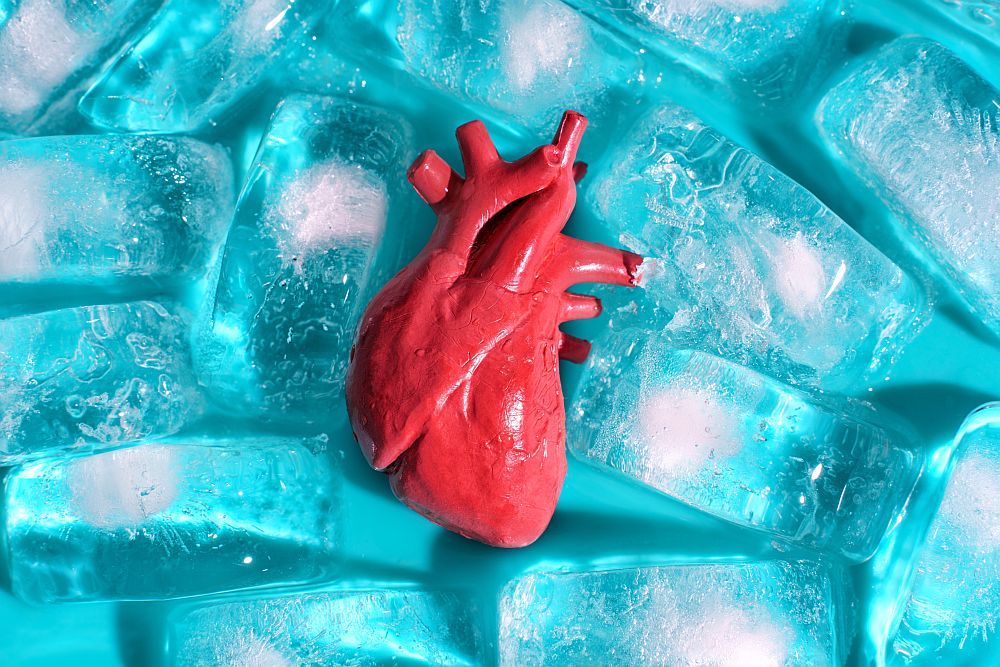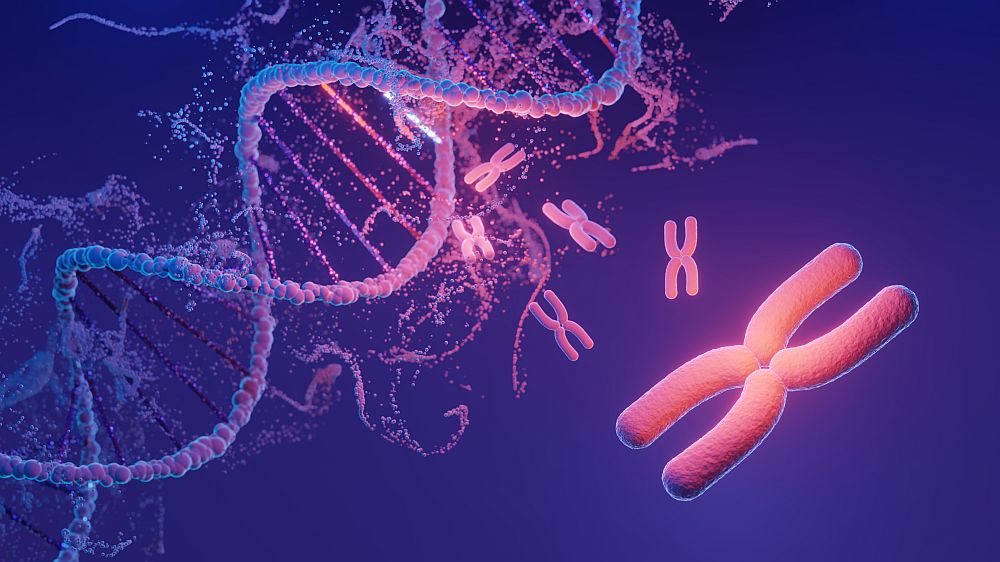
[Image above]: Larger organs for transplant, such as hearts and lungs, are only viable for a few hours when stored on ice. Cryopreservation could greatly improve our ability to transport larger organs, if we can overcome challenges with the rewarming process. Credit: Chizhevskaya Ekaterina / Shutterstock.com
More than 100,000 people are currently waiting for organ transplants in the United States. Yet each year, approximately 12,000 organs—or about 20% of all donated organs—are discarded. While various factors contribute to this high discard rate, the logistical challenge of transporting organs to where they are needed is a big part.
Currently, after recovery, organs are preserved using special solutions and packed on ice for transportation to the transplant center. While cold storage extends the viability of organs, the amount of time gained is very limited—while kidneys can last up to 24–36 hours, hearts and lungs last only about 4–6 hours.
To preserve organs for longer periods, scientists are avidly studying the process of cryopreservation, which involves freezing biological materials to very low temperatures. So, instead of simply keeping the organs in a cold environment, the tissue would be frozen and then thawed after transport.
The challenge with cryopreservation, however, is the formation of ice crystals during the freezing process. These crystals spur cell death, and the larger the biological material being frozen, the harder it is to ensure uniform cooling to prevent crystal formation.
Traditionally, only very small biological samples such as microbes could survive cryopreservation. But we can now successfully freeze larger biological materials such as human eggs without damage using a vitrification approach to cryopreservation.
Vitrification is the full or partial transformation of a substance into a glass or glass-like state. It achieves this transformation by cooling the substance extremely quickly, which prevents ice crystal formation.
Vitrification helped solve the challenge of uniform cooling of biological materials. But there is still the challenge of uniform thawing, and larger organs are susceptible to ice crystal formation or cracking during the warming process. (That is a big reason why the controversial practice of cryonics, or the cryopreservation of a legally deceased person’s body or brain, is not currently possible.)
Alternative ways of warming frozen materials can help overcome the challenge of uniform thawing. For example, in 2023, researchers at the University of Minnesota vitrified rat kidneys using liquid nitrogen (-150°C) and then fully restored the organs using nanoparticle technology. The technique involved injecting the kidneys with a magnetic nanoparticle solution as well as another liquid. During the rewarming process, alternating magnetic fields were used to heat the nanoparticles, which were then drained via the liquid. The study noted potential for human trials in the coming years.
Besides alternative warming approaches, having a better understanding of the solutions used for vitrification could improve the cryopreservation process as well, as demonstrated in a July 2025 open-access paper.
Taking a closer look at glass transition temperatures in vitrification solutions
In the recent open-access paper, researchers at Texas A&M University investigated vitrification solutions with different glass transition temperatures (Tg) to understand this parameter’s effect on the likelihood of organ cracking during the rewarming process.
They focused on this parameter because “While many thermophysical aspects of solutions with glass transitions in this range have been studied as they pertain to thermal stress cracking, the role of the glass transition temperature itself, to our knowledge, has not,” they write.
To investigate the potential relationship between Tg and cracking behavior, the researchers used four binary solutions of water and organic molecules with Tg spanning more than 50°C: 49 wt.% dimethyl sulfoxide ( Tg = -131°C); 79 wt.% glycerol ( Tg = -102°C), 65 wt.% xylitol ( Tg = -87°C), and 63 wt.% sucrose ( Tg of -82°C). They then analyzed the solutions experimentally and computationally to draw their conclusions.
The researchers found that thermal stress during vitrification is often due to an unfavorable pairing of the high critical cooling/warming rates needed for aqueous glass formation, in addition to the fact that many biological systems have poor thermal diffusivity. These two factors together mean that thermal gradients can occur throughout the process, causing expansions and contractions at different rates throughout the organ, which generate stresses that the brittle aqueous glasses cannot withstand.
To mitigate these effects, “We learned that higher glass transition temperatures reduce the likelihood of cracking,” says senior author Matthew Powell-Palm, assistant professor of mechanical engineering at Texas A&M University, in a press release.
Currently, the main commercial vitrification solutions “may be uniquely ill-suited to the avoidance of thermal stress,” the researchers write. They argue that the development of future solutions should account for the glass transition temperature, as well as biocompatibility.
“This study offers a seminal contribution to our understanding of aqueous solution thermodynamics,” says co-author Guillermo Aguilar, professor of mechanical engineering, in the press release. “I look forward to more encouraging results in this direction, which will ultimately yield an increased viability of biological systems of all scales—from single cells to whole organs.”
This study was funded by the National Science Foundation’s Engineering Research Center for Advanced Technologies for the Preservation of Biological Systems.
The open-access paper, published in Nature, is “Higher glass transition temperatures reduce thermal stress cracking in aqueous solutions relevant to cryopreservation” (DOI: 10.1038/s41598-025-13295-7).
Embracing crystallization: Lessons from the freeze-tolerant wood frog
Crystallization and successful cryopreservation are not necessarily mutually exclusive. The freeze-tolerant wood frog, for example, embraces the ice crystal formation typical of slow freezing processes.
As explained in a previous CTT, wood frogs, which live north of the Arctic Circle, will freeze on both the outside and inside during the coldest months of the year. During this process, however, the frog’s glucose levels will rise and mix with the urea in its blood, acting as a protectant to prevent the intercellular fluids from freezing and being damaged. This process has also served as a potential model for researchers to replicate with human organs.
Author
Helen Widman
CTT Categories
- Biomaterials & Medical


